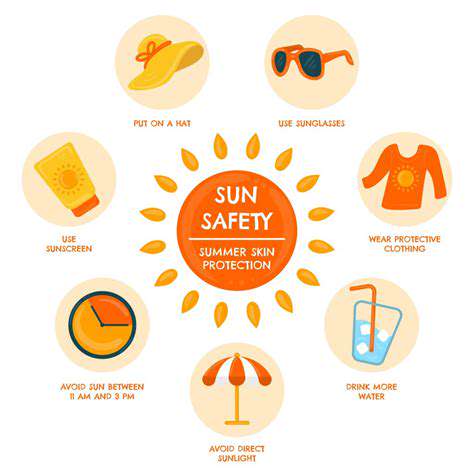How to prevent sunburn on your dog’s nose and ears
Why are Dog Noses and Ears Prone to Sunburn?
Why are Dog Noses and Ears Prone to Sunburn?
Dog noses and ears are often the first areas to show signs of sunburn due to their thinner skin and high concentration of blood vessels. This delicate skin structure is much more susceptible to the harmful effects of ultraviolet (UV) radiation than the thicker, more insulated skin on their bodies. The lack of fur cover on these exposed areas means there's no natural barrier to protect them from the sun's rays. This vulnerability makes them especially prone to sunburn, similar to how humans experience sunburn on their noses and cheeks.
Furthermore, the pigmentation in a dog's nose and ears often doesn't provide adequate protection. While some breeds have naturally pigmented noses and ears that offer some shade, many others, especially those with light coloring, do not have sufficient melanin to effectively screen out UV radiation. This lack of built-in protection leaves the skin particularly vulnerable to sun damage.
The Impact of UV Radiation on Dog Skin
Ultraviolet radiation, both UVA and UVB, can cause significant damage to a dog's skin. UVA rays penetrate deeper into the skin, contributing to premature aging and long-term damage, while UVB rays are more directly responsible for the initial sunburn symptoms, like redness and inflammation. Both types of radiation can also increase the risk of skin cancer in dogs, although it's less common than in humans.
The Role of Skin Pigmentation
The amount and type of pigment (melanin) in a dog's skin play a crucial role in protecting it from the sun. Dogs with darker noses and ears generally have more melanin, providing a better natural sunscreen. Conversely, dogs with lighter-colored noses and ears are more susceptible to sunburn because their skin produces less melanin, requiring more proactive sun protection.
The Importance of Skin Thickness
The thinner skin on a dog's nose and ears contributes significantly to their vulnerability to sunburn. Thin skin offers less protection against the sun's rays, making it more susceptible to burning and damage. The lack of protective layers, like thick fur, further compounds this issue.
Environmental Factors Contributing to Sunburn
The intensity and duration of sun exposure are crucial factors in determining the risk of sunburn in dogs. Sunny days, especially during peak hours, can cause significant damage to a dog's sensitive skin. Reflective surfaces, such as water or sand, can amplify the sun's rays, increasing the risk of sunburn even on cloudy days. Dogs spending prolonged periods outdoors in direct sunlight are at a higher risk.
How to Identify Sunburn in Dogs
Recognizing the signs of sunburn in dogs is important for prompt treatment and preventing further damage. Initial symptoms often include redness, swelling, and tenderness in the affected areas. In more severe cases, you might notice blistering, crusting, or even open sores. If your dog displays any of these signs, consult a veterinarian immediately. Early intervention is key to managing and healing sunburns effectively.
Prevention Strategies for Protecting Your Dog's Skin
Protecting your dog's nose and ears from sunburn requires proactive measures. Using a pet-safe sunscreen specifically designed for dogs is a crucial component of sun protection. This will help shield their sensitive skin from harmful UV rays. Providing shade during peak sun hours, limiting outdoor time during intense sun exposure, and using protective clothing can also be extremely helpful in protecting your dog from further sun damage. Regular checks for any signs of sunburn are essential. Remember to consult your veterinarian for specific recommendations tailored to your dog's breed, skin type, and lifestyle.
Identifying the Signs of Sunburn in Dogs

Recognizing Early Symptoms
Sunburn, a painful and often uncomfortable consequence of excessive sun exposure, manifests in various ways, depending on the individual's skin type and the intensity of the sun's rays. Early indicators often appear within a few hours of sun exposure, ranging from mild redness to more noticeable discomfort. These initial symptoms can be easily overlooked if not carefully monitored, leading to further damage and potential complications. Knowing the early warning signs can help prevent more severe sunburn and promote quicker recovery.
One of the most common early symptoms is a flushed or reddened area on the skin. This redness can range from a subtle pink hue to a more intense, fiery appearance. The affected area might also feel warm to the touch. It's important to note that these early signs can vary in their intensity and appearance, making it crucial to pay attention to any changes in skin sensation or color.
Understanding the Progression of Sunburn
As time progresses after sun exposure, the symptoms of sunburn typically intensify. The redness can become more pronounced, and the affected area may begin to feel significantly hot and painful. This is often accompanied by a stinging sensation and sometimes, small blisters filled with clear fluid. The severity of the sunburn is directly correlated with the duration and intensity of sun exposure.
While the initial symptoms might appear mild, it's crucial to be vigilant about any further changes in the affected area. Progression to more severe symptoms can indicate a need for immediate medical attention. Observing the progression of the sunburn can help determine the appropriate course of action for treatment and recovery.
Identifying the Severity of Sunburn
The severity of sunburn can range from mild to severe, impacting the skin's overall health. Mild sunburn typically exhibits redness, some tenderness, and minor discomfort. More severe sunburns involve blistering, significant pain, and potential swelling. Recognizing the severity of the sunburn is crucial in determining the appropriate level of care and the necessary recovery time.
Severe sunburn can result in a wide range of symptoms, including intense pain, swelling, blistering, and fever. These symptoms can last for several days or even weeks, depending on the severity of the burn. Prompt medical attention is essential for severe sunburns to prevent further complications and promote healing.
Taking Preventive Measures
Prevention is key when it comes to sunburn. By taking appropriate precautions before sun exposure, individuals can significantly reduce their risk of developing sunburn. Protecting your skin with high SPF sunscreen is essential, and this should be reapplied frequently, especially after swimming or sweating. Protective clothing, such as long-sleeved shirts and wide-brimmed hats, can also provide crucial protection from the sun's harmful rays.
Regularly checking the UV index forecast and adjusting sun protection measures accordingly is vital. Understanding the intensity of the sun's rays can help individuals make informed decisions about their sun exposure and take the necessary precautions to avoid sunburn. Knowing when to limit time in the sun, especially during peak hours, is another essential aspect of sun safety.

- First aid for dogs exposed to toxins
- How to manage a dog’s separation anxiety at night
- How to improve the life of a senior dog
- How to create a stress free environment for your dog
- Why cleaning your dog’s ears is essential
- How to keep your dog parasite free all year round
- The benefits of dog puzzles for mental stimulation
- How to travel with your dog stress free
- What to feed a dog recovering from illness
- How to house train a rescue dog quickly
- How to make your dog enjoy bath time
- How to recognize dental problems in dogs